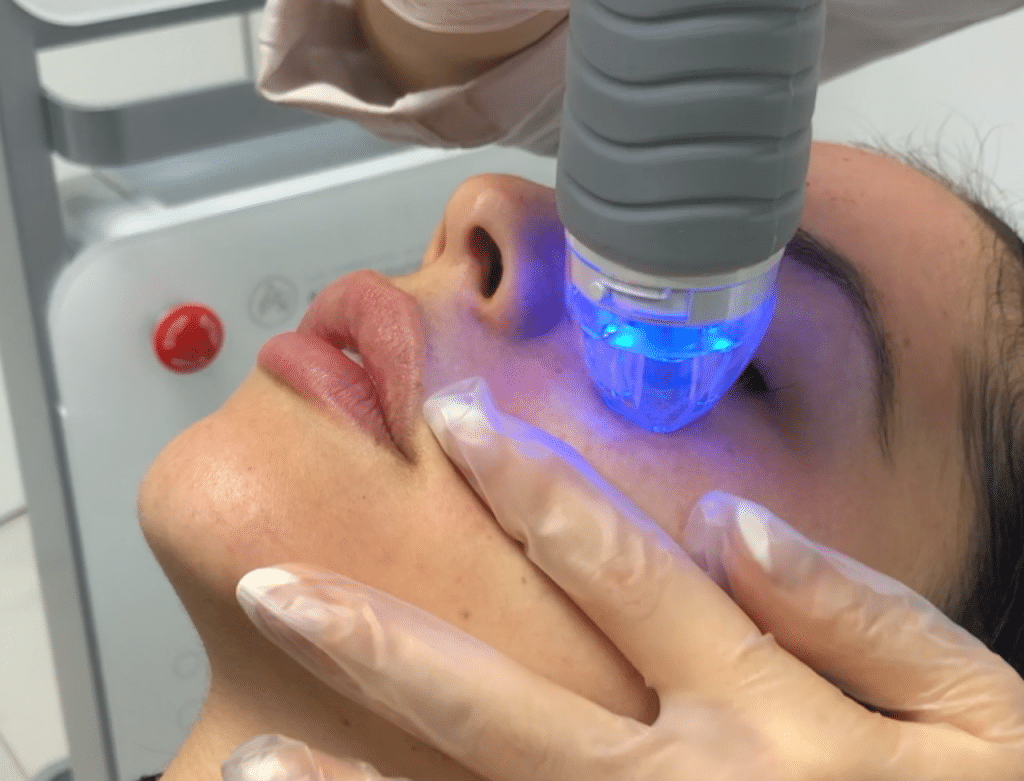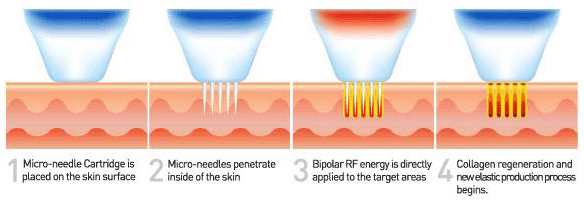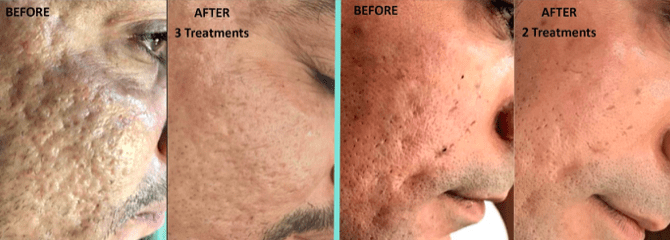What Is The Radio Frequency Microneedling?
RF Microneedling is a revolutionary skin treatment that delivers dramatic anti-aging results by enhancing the benefits of Microneedling with radio-frequency technology. The dynamic combination stimulates tissue remodeling and triggers the production of collagen.¹ By repairing, remodeling, and resurfacing the skin at a cellular level, RF Microneedling can improve a litany of common skin blemishes, including fine lines and wrinkles, skin laxity, hyperpigmentation, skin tone and texture, stretch marks, cystic acne, and acne scars. The advanced technology of the Secret RF Microneedling system makes treatments far gentler than traditional skin ablation procedures, resulting in less downtime. This makes RF Microneedling the ideal solution for men and women who want a non-surgical, non-invasive option for rejuvenating their appearance with radiant skin that looks dramatically younger and healthier.
How Does Radio Frequency Work?
Radiofrequency Microneedling is an advanced medical device that combines microneedling and radiofrequency to repair and regenerate the skin cells on the deepest cellular level. Radiofrequency Microneedling system uses a matrix of ultra-sharp micro-fine needles that penetrate the skin to a depth of up to 4 millimeters. This is deeper than any other microneedling device on the market – enabling treatment deep within the cellular foundation – rather than superficially like many other skin resurfacing treatments.
These tiny needle pricks create “micro-wounds” that are neither painful nor visible to the naked eye. However, these “wounds” stimulate the skin to start repairing itself – thereby also repairing wrinkles, lines, discolorations, scars and more.
Additionally, the radiofrequency component is a “Subdermal Adipose Remodeling Device” (SARD) –meaning that it utilizes heat energy to actually melt and mold unwanted fat to create more youthful facial and body contours.
What to Expect Post Procedure.
Setting appropriate expectations for post-treatment sequelae is important for achieving patient satisfaction. The type and severity of postprocedural reactions and the duration of downtime depend on the nature of the treatment.
With mild treatments, patients generally experience no postoperative pain and little to no social downtime. Treatments performed with more aggressive parameters are associated with more sequelae, but generally patients only experience mild to moderate postoperative pain and minimal downtime.
A topical anesthetic is used to improve patient comfort during the procedure, although a nerve block may be used when treating around the mouth. To minimize complications, patients should be advised to avoid using any anti-inflammatory treatments for 2 weeks prior to the procedure and retinoids for three days.
To prevent herpes reactivation, patients who are being treated around the mouth are started on valacyclovir with dose adjustment as necessary for renal impairment. Due to the risk of folliculitis, valacyclovir along with an oral antibiotic are prescribed for all patients who are having a more aggressive treatment or who have a history of fol- liculitis with a previous treatment.


